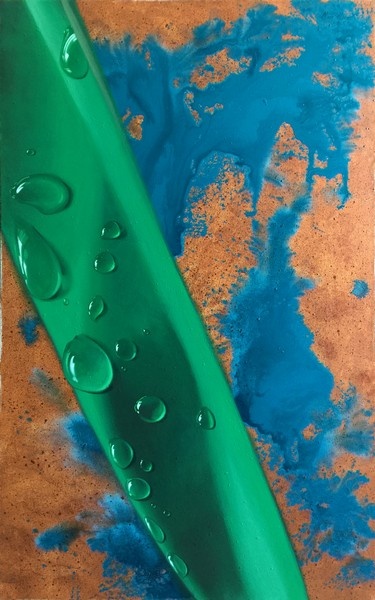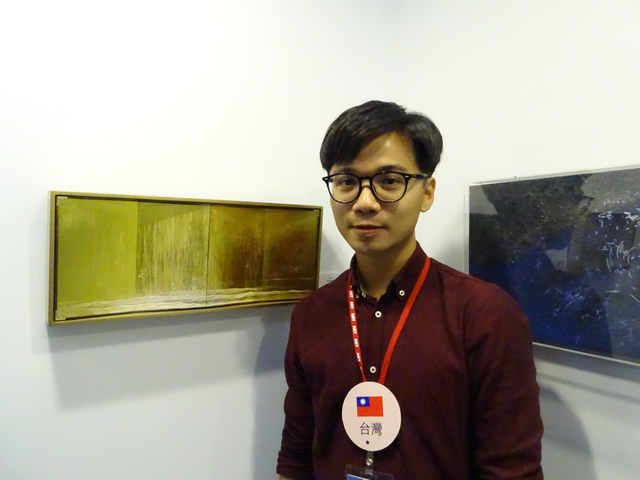Interview with the Artist

The artist Chung Kung-Che likes to paint lotus flowers, especially the blooming lotus flowers. However, the lotus flower of this exhibition was changed to include the flowers waiting to bloom, and the angle of view is to look up from the low point of view, creating a sense of infinite extension in the visual direction.
He wants to depict the sun shining through the leaves, with penetrating power, presenting a dynamic light and shadow change.


The artist Wang Kyaw Kyaw graduated from the Department of Painting and Calligraphy of the National Taiwan University of Arts. At that time, he studied heavy color meticulous painting - a combination of modern and Tang Dynasty techniques, combining classical elegance with modern vivacity.
Teacher Wang’s creation wants to integrate the culture of Burma and Tang Dynasty. He happened to read a new YueFu poem by Bai Juyi, by which he was inspired to make these paintings.
“Once the jade snail-shaped horns are blown, the dancer's topknots excite; the bronze drums are beaten intensely and the dancers rise matchingly; the pearl tassels rotate and the stars sway; the dragons move in the flowers.” This folk song styled palace verse recorded the Burma music and dance team performing to the Tang Dynasty. They blew the snail-shaped horns, beat the bronze drums; the dancers, with topknots on the head, tattoos on the body, danced gracefully. Teacher Wang integrated the cultural elements of YueFu poems into the paintings, bringing the paintings more layers and much depth.


The artist Mor Mor likes to paint water, because the water can show thousands of gestures, full of agility, as if there is life in it. With the changing environment, different background colors, water will have different color changes; the background changes, and the color of the water droplets changes.
 |
 |
|---|

Artist Martin Versteeg's works are all "hands". This theme is chosen because "hands" are like words, expressing emotions such as warmth and tolerance.
The hand in the sketch works expresses the image of "giving", just as the parents taking care of us with effort, not asking for reward, and also as the Nature embracing human beings, fully accepting, symbolizing broad-mindedness and selfless dedication. The hand of the oil paintings has more emotional elements.


The artist Huang Shih Chang began to practice the painting of the rain when he was serving in the military. Because it takes a very focused mind to paint the thin rain traces, the mind also becomes stable in the process.
Later, the reflection series was exhibited, because I felt that life is like a water mirror, seemingly calm, but with many tiny fluctuations hidden. Because the gouache pigment is a grounded mineral powder, it will have different effects and brilliance under the illumination, so he especially likes to use this medium in his creations.

This year, Mickey Huang supported young and emerging artists with action, and specially designated to collect Huang Shih Chang's works. Mickey Huang feels that the medium used is special and very creative. He praises that the rain traces are very finely painted, and the depiction of the splash of water can show the artist's skill.





